|
|
|
|
|
|
|
 |
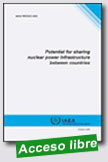 |
Potential
for Sharing Nuclear Power Infrastructure between
Countries
IAEA,
2006, 79 p.
The introduction or
expansion of a nuclear power programme in a country and
its successful
execution is largely
dependent on the network of national infrastructure,
covering a wide
range of activities and
capabilities. The infrastructure areas include legal
framework, safety
and environmental regulatory
bodies, international agreements,
|
|
physical facilities,
finance,
education, training, human
resources and public information and acceptance. The
wide extent
of infrastructure needs
require an investment that can be too large or onerous
for the national
economy.
The burden of infrastructure can be reduced
significantly if a country forms a sharing
partnership with other
countries. The sharing can be at regional or at
multinational level. It
can include physical
facilities, common programmes and knowledge, which will
reflect in
economic benefits. The
sharing can also contribute in a significant manner to
harmonization
of codes and standards in
general and regulatory framework in particular. The
opportunities
and potential of sharing
nuclear power infrastructure is determined by the
objectives, strategy
and scenario of the national
nuclear power programme.
|
 |
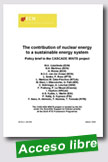 |
The
contribution of nuclear energy to a sustainable energy
system
Netherlands
Energy Research Foundation, Mar 2006, 13 p.
This report provides an
overview of the main results from scenarios in the
CASCADE MINTS project to assess the role of nuclear
energy in solving global and European energy and
environmental issues. Two contrasting scenarios have
been analysed, comparing the impacts of a phase-out of
nuclear
|
|
capacities to a situation where
conventional nuclear power plants achieve a 25%
investment cost reduction, both under a rather strong
climate policy.
|
 |
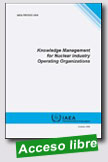 |
Knowledge
Management for Nuclear Industry Operating Organizations
IAEA, 2006, 185 p.
Managing
knowledge in the nuclear industry will be one of the
most critical challenges in the near future. The purpose
of this publication is to identify the fundamental
elements needed for an effective knowledge management
(KM) system, to share with nuclear industry operating
organization managers lessons learned regarding KM, as
well as providing guidance concerning methods for
KM
|
|
implementation.
Intended as an introduction to KM approaches and
practices, this document also provides guidance on
improving KM practices in nuclear industry operating
organizations. Senior and middle level managers of
nuclear industry operating organizations will find the
book provides a wealth of practical information and will
be a critical resource informing their KM planning,
system implementation and improvements.
|
 |
 |
Guía
de indicaciones para la correcta solicitud de pruebas de
diagnóstico por imagen
Comisión
Europea, Dirección General de Medio Ambiente, 2000, 141
p.
The
newly revised medical exposure directive (97/43/Euratom)
lays down the European Commission general principles of
radiation protection of individuals in relation to
medical exposure. Member States had to transpose it into
national legislation C until 13 May 2000. Article 6(2)
of the directive requires Member States to ensure that
recommendations concerning referral criteria for
|
|
medical
exposure are available to the prescribers of medical
exposure. This booklet sets out referral guidelines that
can be used by health professionals qualified to refer
patients for imaging, in order to ensure that all
examinations are well justified and optimised.
Referral guidelines This booklet has evolved from that
previously published by the UK Royal College of
Radiologists in 1998 and is for imaging entitled: Making
the best use of a department of clinical radiology:
guidelines for doctors. These referral guidelines have
been adapted by experts representing European radiology
and nuclear medicine, in conjunction with the UK Royal
College of Radiologists, and may now be adopted as
models for the Member States.
These referral guidelines are not binding on Member
States, and form part of a number of technical guides
drawn up to facilitate implementation of the medical
exposure directive. Local variations may be required
according to healthcare practice and provision.
Continued use of recommendations of this kind should
improve clinical practice and lead to a reduction in the
number of referrals for investigation and consequently
to a reduction in associated medical radiation
exposure.
|
 |
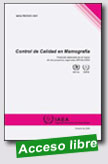 |
Control
de Calidad en Mamografía
IAEA
TECDOC Series No.
1517
IAEA-TECDOC-1517, 2006, ISBN 92-0-310306-6, Spanish.
15.00 Euro
Full Text, (File Size: 1939 KB).
Subject Classification: 0103 - Medical physics
(including dosimetry).
Responsible
Officer: Mr. Pedro Ortiz Lopez, NSRW
El
presente protocolo de control de calidad en mamografía
es el resultado del trabajo de dos
proyectos
regionales realizados en América Latina
|
|
dentro
del marco de ARCAL con el
apoyo
del Organismo Internacional de Energía Atómica. En el
proyecto ARCAL LV
(RLA/6/043)
sobre el Aseguramiento de la Calidad en Mamografía, se
analizó la situación
actual
de la mamografía en los países integrantes del
proyecto: Bolivia, Colombia, Costa
Rica,
Cuba, El Salvador, Guatemala, Nicaragua, Panamá,
Paraguay, Perú, República
Dominicana
y la República Bolivariana de Venezuela, y como uno de
los productos, se
elaboró
un protocolo de control de calidad.
|
 |
|

|
Stern
Review on the Economics of Climate Change
HM Treasury. 30October 2006, 575 p.
There
is still time to avoid the worst impacts of climate
change, if we take strong action now. The scientific
evidence is now overwhelming: climate change is a
serious global threat, and it demands an urgent global
response. This Review has assessed a wide range of
evidence on the impacts of climate change and on the
economic costs, and has used a number of different
techniques to assess costs
|
|
and
risks. From all of these perspectives, the evidence
gathered by the Review leads to a simple conclusion: the
benefits of strong and early action far outweigh the
economic costs of not acting. Climate change will affect
the basic elements of life for people around the world
– access to water, food production, health, and the
environment. Hundreds of millions of people could suffer
hunger, water shortages and coastal flooding as the
world warms.
|
 |
 |
A
Progressive Energy Platform
The
Progressive Policy Institute, 16 October 2006, 12 p.
America
faces a dangerous, long-term energy crisis. The
country's addiction to carbon-based fuels -- especially
imported oil -- poses a triple threat to its national
security, economic vitality, and environmental health.
Yet the Bush administration and the Republican Congress
have been shirking their responsibility to spur change.
Instead, they cling defiantly to the status quo.
|
|
It
is time for progressives to fill the leadership void by
offering a realistic plan that begins in the here and
now and leads quickly to a clean energy future. In a new
policy report entitled, A Progressive Energy Platform,
the Progressive Policy Institute offer a new plan to
address America's two distinct energy needs: fuel for
transportation and power to generate electricity.
|
 |
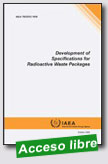 |
Development of Specifications for Radioactive Waste
Packages
IAEA,
October 2006,
62 p.
The
main objective of this publication is to provide
guidelines for the development of waste package
specifications that comply with waste acceptance
requirements for storage and disposal of radioactive
waste. It will assist waste generators and waste package
producers in selecting the most significant parameters
and in developing and implementing specifications for
each individual type of waste and waste
|
|
package.
This publication also identifies and reviews the
activities and technical provisions that are necessary
to meet safety requirements; in particular, selection of
the significant safety parameters and preparation of
specifications for waste forms, waste containers and
waste packages using proven approaches, methods and
technologies. This report provides guidance using a
systematic, step-wise approach, integrating the
technical, organizational and administrative factors
that need to be considered at each step of planning and
implementing waste package design, fabrication,
approval, quality assurance, and control. The report
reflects the considerable experience and knowledge that
has been accumulated in the Member States and is
consistent with the current international requirements,
principles, standards and guidance for the safe
management of radioactive waste.
|
 |
|
|
|
|
|
|
|
|
|
|
|
|
|
|
|
|
|
|
|
|
|
|
|
|
|
|
|
|
|
|
|
|
|
|
